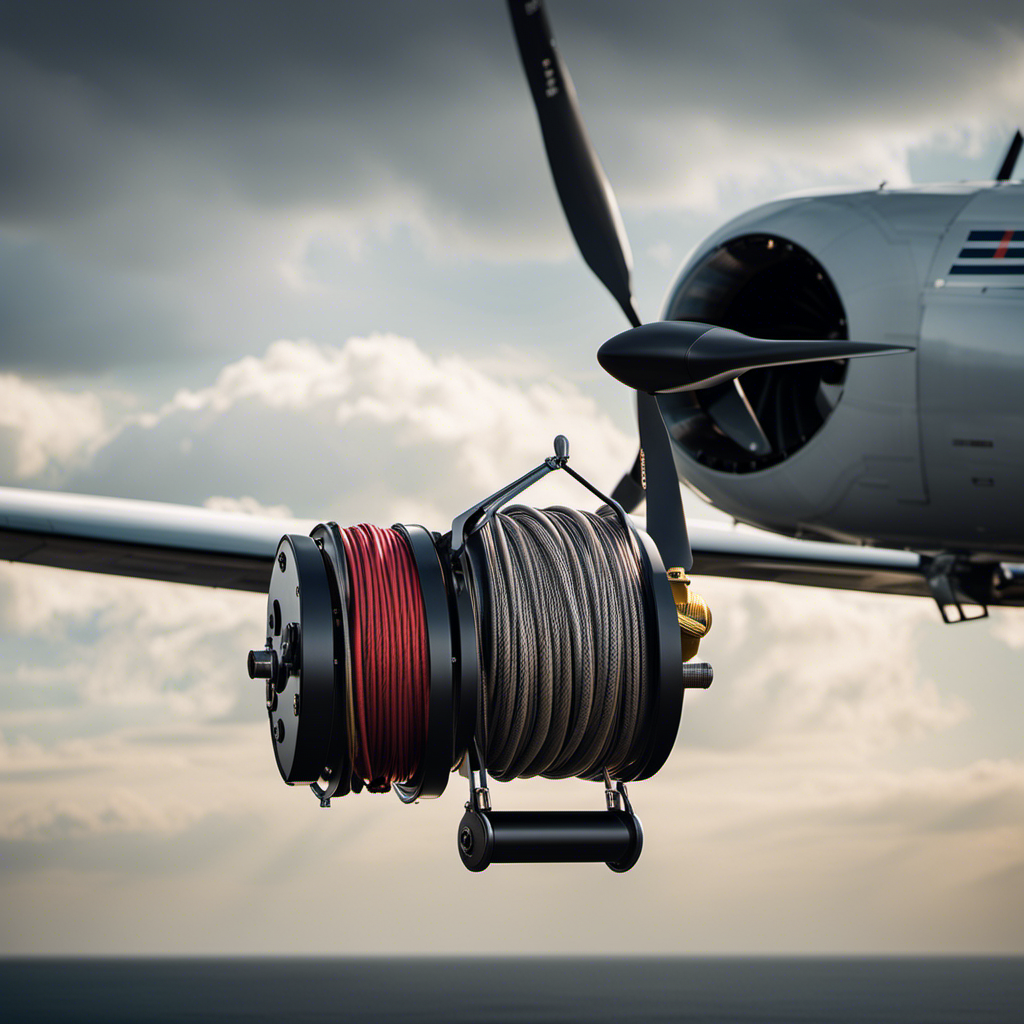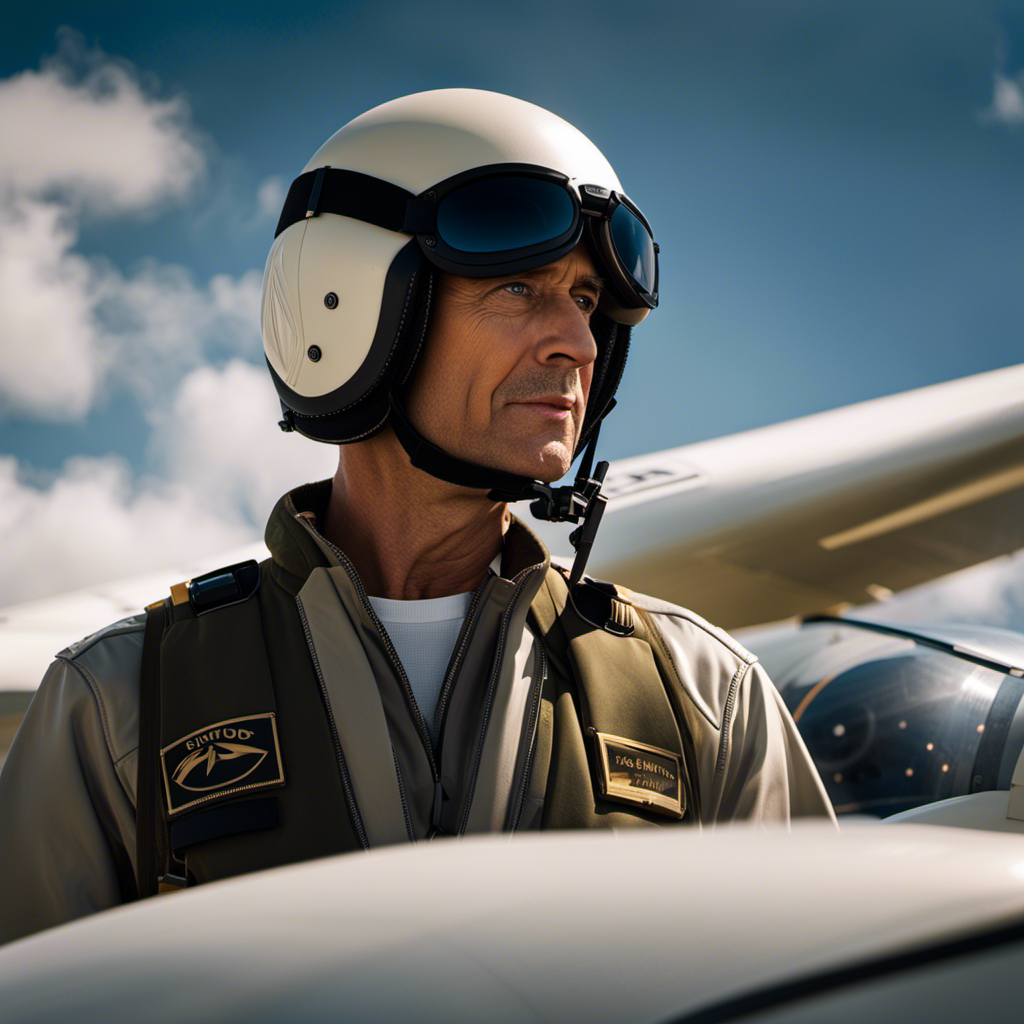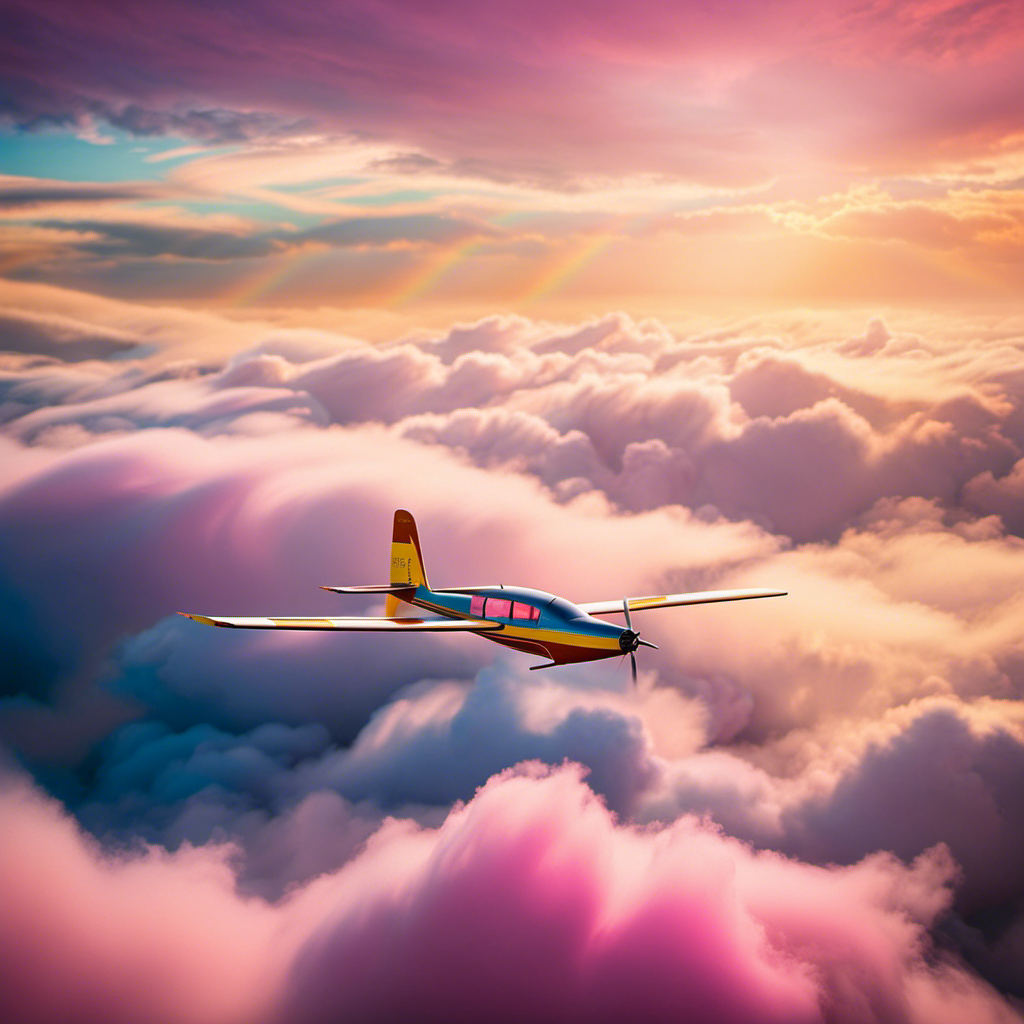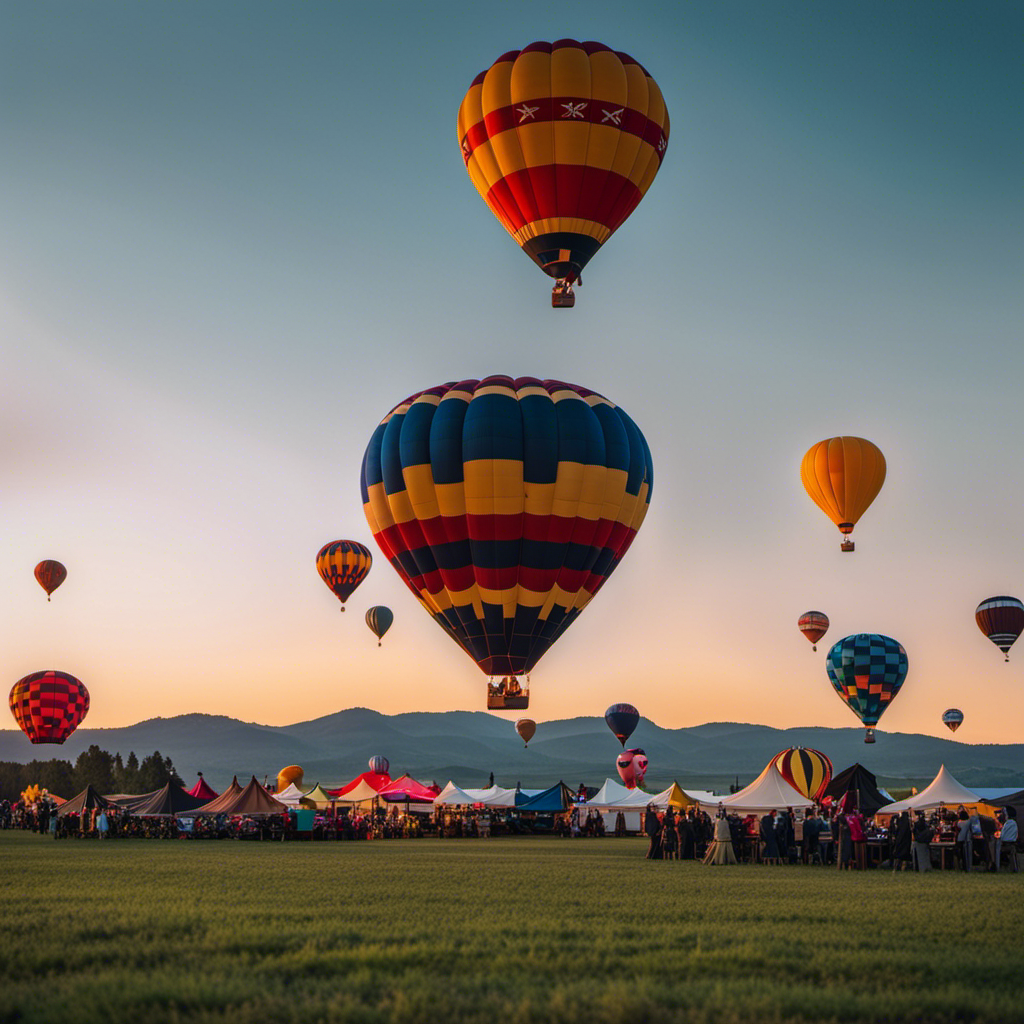Ever wonder what it feels like to dance with the clouds? Let me tell you, sailing across the sky with just a breeze for company is nothing short of magical. Imagine, you’re up there, quiet except for the whisper of the wind, feeling like a bird on a joyride. That’s the adventure of gliding for you. It’s a rush like no other, and who better to share these sky-high secrets than someone who’s ridden the wind’s back more than a few times? **Gliding** isn’t just about flying; it’s about tasting freedom in its purest form. Stick around, and I’ll show you why this is an adventure you won’t want to miss.
In this article, I will guide you through the ins and outs of gliding, from understanding the principles of aerodynamics to preparing for a gliding flight. So buckle up (or should I say, strap in) and get ready to learn how to fly gliding!
Key Takeaways
- Launch technique and wind conditions play a crucial role in gliding, requiring adjustments and adherence to specific procedures.
- Gliders can be operated either through aerotow launches, where the glider is connected to a powered aircraft by a towline, or through self-launching techniques with engines.
- Flying techniques and maneuvers, such as turns, climbs, thermal soaring, and dynamic soaring, can be practiced to improve gliding skills and overall flying experience.
- Gliding competitions provide opportunities to challenge oneself, showcase skills, learn from experienced pilots, and establish a reputation as a skilled glider pilot.
What is Gliding?
Gliding is when you fly in an aircraft without an engine. It is a form of aviation that relies on the natural forces of the atmosphere to provide lift and sustain flight. Gliders, also known as sailplanes, are designed with long, slender wings and a streamlined body to maximize their efficiency in staying aloft.
Introduction to gliding can be an exhilarating experience. It allows you to soar through the sky, feeling the freedom and tranquility that comes with flying silently. Unlike powered aircraft, gliders offer a unique opportunity to connect with nature and experience the beauty of the world from a different perspective.
One of the advantages of gliding is the ability to stay airborne for extended periods. By utilizing rising air currents, known as thermals, gliders can gain altitude and remain aloft for hours. This allows pilots to explore vast distances and undertake cross-country flights.
Understanding the principles of aerodynamics is crucial in gliding. By comprehending how air flows over the wings and how to manipulate the controls, pilots can control the glider’s flight path and make precise maneuvers. It is this knowledge that enables gliders to gracefully navigate the skies.
Understanding the Principles of Aerodynamics
Understanding the principles of aerodynamics helps us grasp the mechanics of flight, especially when it comes to gliding. In gliding, there are three key elements to consider: lift, drag, and thrust.
Lift is the force that opposes gravity and allows the glider to stay in the air. It is generated by the shape and angle of the wings.
Drag, on the other hand, is the resistance that the glider experiences as it moves through the air. Minimizing drag is essential to maintain speed and efficiency.
Lastly, thrust is the force that propels the glider forward. While gliders do not have engines, they can generate thrust through techniques such as ridge soaring or thermals.
Understanding these principles of glider design enables pilots to maximize their efficiency and performance in the air.
Now, let’s explore the different types of gliders.
The Different Types of Gliders
When it comes to exploring the different types of gliders, you’ll find a wide range of options available to suit your flying preferences. Gliders can vary in size, design, and purpose, each offering a unique flying experience.
Here are two sub-lists to help you understand the types of gliders and their aerodynamics:
Types of Gliders:
- Sailplanes: These are the most common type of gliders, designed for long-distance flights and soaring. They have a streamlined shape and high aspect ratio wings for efficient gliding.
- Hang Gliders: These gliders are characterized by a delta-shaped wing and a harness for the pilot. They are lightweight and agile, perfect for recreational flying and aerobatics.
Aerodynamics of Gliders:
- Lift: Gliders generate lift by utilizing the shape of their wings and the flow of air over them.
- Drag: Gliders minimize drag through sleek designs, allowing for longer flights and better performance.
Understanding the different types of gliders and their aerodynamics is essential when preparing for a gliding flight. The next section will delve into the necessary steps to ensure a successful and safe experience.
Preparing for a Gliding Flight
When preparing for a gliding flight, it’s crucial to prioritize safety precautions and have the right equipment.
This includes ensuring that the glider is in good working condition, having a reliable parachute, and wearing appropriate safety gear such as a helmet and harness.
Additionally, understanding and monitoring weather conditions is essential for a safe flight, as strong winds or storms can pose significant risks.
Lastly, thorough flight planning is necessary to determine the route, airspace restrictions, and potential landing sites, allowing for a smooth and well-prepared gliding experience.
Safety Precautions and Equipment
To ensure your safety while gliding, it’s important to wear the appropriate protective gear and follow all safety precautions. Safety gear is essential in minimizing the risk of injury during a gliding flight. This includes a well-fitted helmet, goggles to protect your eyes, and a sturdy harness to keep you secure in the cockpit.
Additionally, understanding and practicing emergency procedures is crucial. Knowing how to handle unexpected situations such as a sudden loss of altitude or a malfunctioning instrument can make a significant difference. Familiarize yourself with the emergency checklist provided by your gliding club and practice these procedures regularly.
By being prepared and equipped with the right safety gear, you can enjoy your gliding experience with peace of mind.
Speaking of preparation, let’s now explore the importance of considering weather conditions and flight planning.
Weather Conditions and Flight Planning
It’s crucial to consider weather conditions and plan your flight accordingly in order to ensure a safe and enjoyable gliding experience. The flight performance of a glider is affected by various meteorological factors, such as wind speed and direction, air temperature, and atmospheric stability.
Before taking off, it’s essential to assess these conditions to determine if they are suitable for gliding. Strong winds can make it difficult to control the glider, while unstable atmospheric conditions can lead to turbulence and hazardous flying conditions. By carefully analyzing the weather forecast and consulting with experienced pilots, you can make informed decisions about when and where to fly.
Now, let’s move on to discussing the different launching methods used in gliding.
Launching Methods
When it comes to launching a glider, there are several methods to choose from.
One option is a winch launch, where a cable attached to the glider is rapidly reeled in by a powerful motor, propelling the glider into the air.
Another method is an aerotow launch, where the glider is connected to a powered aircraft via a towline and is towed into the air.
Lastly, there are self-launching gliders, which have their own built-in engines that allow them to take off under their own power.
Winch Launch
The winch launch is a popular method for getting gliders into the air quickly and efficiently. It involves using a winch, which is essentially a powerful motor with a cable, to rapidly pull the glider forward and upward. This method requires proper safety procedures to ensure a smooth and safe launch. Here are some important safety considerations for winch launches:
| Safety Procedures |
|---|
| Ensure proper cable tension |
| Maintain clear communication with the winch operator |
| Check for any obstructions on the runway |
| Ensure that the glider is securely attached to the winch cable |
| Be aware of wind conditions and adjust launch technique accordingly |
Aerotow Launch
For an aerotow launch, you’ll be connected to a powered aircraft by a towline, which will pull you into the air. Aerotow procedures are carefully followed to ensure a safe and successful launch.
Before the tow, the glider pilot communicates with the tow pilot using hand signals or radio communication. Once connected, the glider pilot maintains a constant tension on the towline to prevent slack.
During the tow, it’s important to maintain the correct position relative to the tow aircraft to avoid any sudden movements. The towline is released once the desired altitude is reached, and the glider pilot then takes control of the glider.
With aerotow safety as a top priority, glider pilots undergo extensive training and follow specific procedures to ensure a smooth and secure launch.
Speaking of launching, let’s move on to the next method: self-launching gliders.
Self-Launching Gliders
Self-launching gliders can be operated independently, without the need for a towline or assistance from another aircraft. These motorized gliders have unique techniques that allow them to take to the skies on their own. Here are some key aspects of self-launching techniques:
-
Motorized Propulsion: Self-launching gliders are equipped with engines that provide the necessary power for takeoff.
-
Variable Pitch Propellers: These gliders have propellers that can be adjusted to optimize performance during takeoff and climb.
-
Retractable Engines: The engines can be retracted after takeoff, reducing drag and allowing the glider to soar freely.
-
Battery Systems: To power the engines, self-launching gliders rely on advanced battery systems for efficient and sustainable flight.
With these innovative features, self-launching gliders offer the freedom and flexibility to explore the skies without external assistance.
Now, let’s delve into the exciting world of flying techniques and maneuvers.
Flying Techniques and Maneuvers
To improve your gliding skills, you should practice different flying techniques and maneuvers. Mastering these techniques will not only make you a more proficient glider pilot, but it will also enhance your overall flying experience. From basic maneuvers like turns and climbs to advanced techniques such as thermal soaring and dynamic soaring, there are various skills to develop. One effective way to visualize these maneuvers is through the use of a table:
| Flying Techniques | Advanced Maneuvers |
|---|---|
| Turns | Loop |
| Climbs | Spin |
| Descents | Stall Turn |
| Thermal Soaring | Immelman |
| Dynamic Soaring | Cuban Eight |
Gliding Competitions and Records
Take advantage of gliding competitions and records to challenge yourself and showcase your skills in the air. Gliding techniques play a crucial role in these events, where pilots aim to achieve maximum distance, speed, or duration.
The gliding world championships, held every two years, gather the most skilled pilots from around the globe to compete in various disciplines. These competitions not only provide an opportunity to test your abilities but also allow you to learn from the best in the sport.
Participating in gliding competitions can push you to improve your flying skills and expand your knowledge of gliding techniques. By setting records or achieving high rankings, you can establish yourself as a formidable glider pilot.
Now, let’s explore the world of gliding clubs and training programs to further enhance your flying journey.
Gliding Clubs and Training Programs
Joining gliding clubs and participating in training programs is a great way to enhance your skills and connect with other passionate pilots. Gliding clubs offer a supportive community of experienced pilots who are eager to share their knowledge and experiences. These clubs often organize regular meetings, social events, and flying excursions, providing opportunities for networking and building lasting friendships.
Training programs offered by these clubs are designed to help aspiring gliders develop their flying abilities and gain confidence in the air. Whether you are a beginner or an advanced pilot, these programs cater to all skill levels and offer a structured approach to learning.
By immersing yourself in these gliding programs and clubs, you can embark on a journey of continuous improvement and camaraderie.
Now, let’s explore the important aspects of gliding safety and regulations.
Gliding Safety and Regulations
Make sure you familiarize yourself with the safety guidelines and regulations when participating in gliding activities. Gliding can be an exhilarating and rewarding experience, but it’s important to prioritize safety at all times.
Here are some key points to keep in mind:
- Always wear appropriate safety gear, including a helmet and harness.
- Regularly inspect and maintain your glider to ensure it is in good working condition.
- Stay up-to-date with gliding accident statistics to understand potential risks and learn from past incidents.
- Gliding instructors must meet certain certification requirements to ensure they have the knowledge and skills to guide and teach others safely.
By following these guidelines and regulations, you can minimize the risks associated with gliding and enjoy this incredible sport to the fullest.
Now, let’s delve into the benefits and enjoyment of gliding.
Benefits and Enjoyment of Gliding
One of the most rewarding aspects of gliding is the sense of freedom it brings. Gliding allows me to soar through the sky, feeling the wind on my face and witnessing breathtaking views from above.
The benefits of gliding go beyond the exhilarating experience. It is a sport that promotes mental clarity and focus, as I need to constantly read the weather conditions and make decisions accordingly. Gliding also enhances my problem-solving skills, as I have to navigate and plan my flights effectively.
The enjoyment of gliding comes from the challenge it presents and the sense of accomplishment when I successfully complete a flight. It is a unique and thrilling experience that allows me to escape the constraints of the ground and enjoy the beauty of the world from a different perspective.
Frequently Asked Questions
How long does it take to learn how to fly a glider?
It typically takes a few months to learn how to fly a glider. The learning curve can vary depending on individual progress, but it involves training requirements such as ground school, flight instruction, and solo flights.
Are there any age restrictions for learning how to fly a glider?
Age requirements for learning to fly a glider vary, but I started at 14. The learning process involves ground instruction, simulator time, and supervised flights. It’s thrilling to soar through the sky with the wind as your guide.
Can gliders fly in bad weather conditions?
Gliders should not fly in bad weather conditions due to safety concerns. Flying techniques and safety precautions include monitoring weather conditions, avoiding storms, and maintaining a safe altitude.
Is it possible to fly a glider solo?
Absolutely! Flying a glider solo is an exhilarating experience. Mastering flying techniques and taking necessary safety precautions are vital. From pre-flight checks to controlling the aircraft, it’s a thrilling adventure that requires skill and precision.
Are there any health restrictions for participating in gliding activities?
Health benefits of gliding include improved cardiovascular fitness and mental well-being. Safety precautions such as proper training, regular check-ups, and adhering to guidelines minimize risks. Overall, gliding is a safe and rewarding activity for individuals of various health conditions.
Conclusion
In conclusion, gliding is an exhilarating sport that allows individuals to experience the freedom of flight. With careful preparation, knowledge of aerodynamics, and training from gliding clubs and programs, anyone can learn how to fly a glider.
One interesting statistic to consider is that the longest glider flight in history lasted for an astounding 1,550 kilometers. This remarkable feat showcases the incredible capabilities of gliders and the potential for thrilling adventures in the sky.
So, why not take to the skies and soar like a bird in a glider?
With a heart that soars as high as the skies, Aria, affectionately known as “Skylark,” is the driving force behind Soaring Skyways. Her journey into the gliding world began as a young dreamer gazing up at the soaring birds, yearning to experience the weightlessness and freedom they embodied. With years of experience both in the cockpit and behind the scenes, Aria’s commitment to the gliding community is unwavering.










